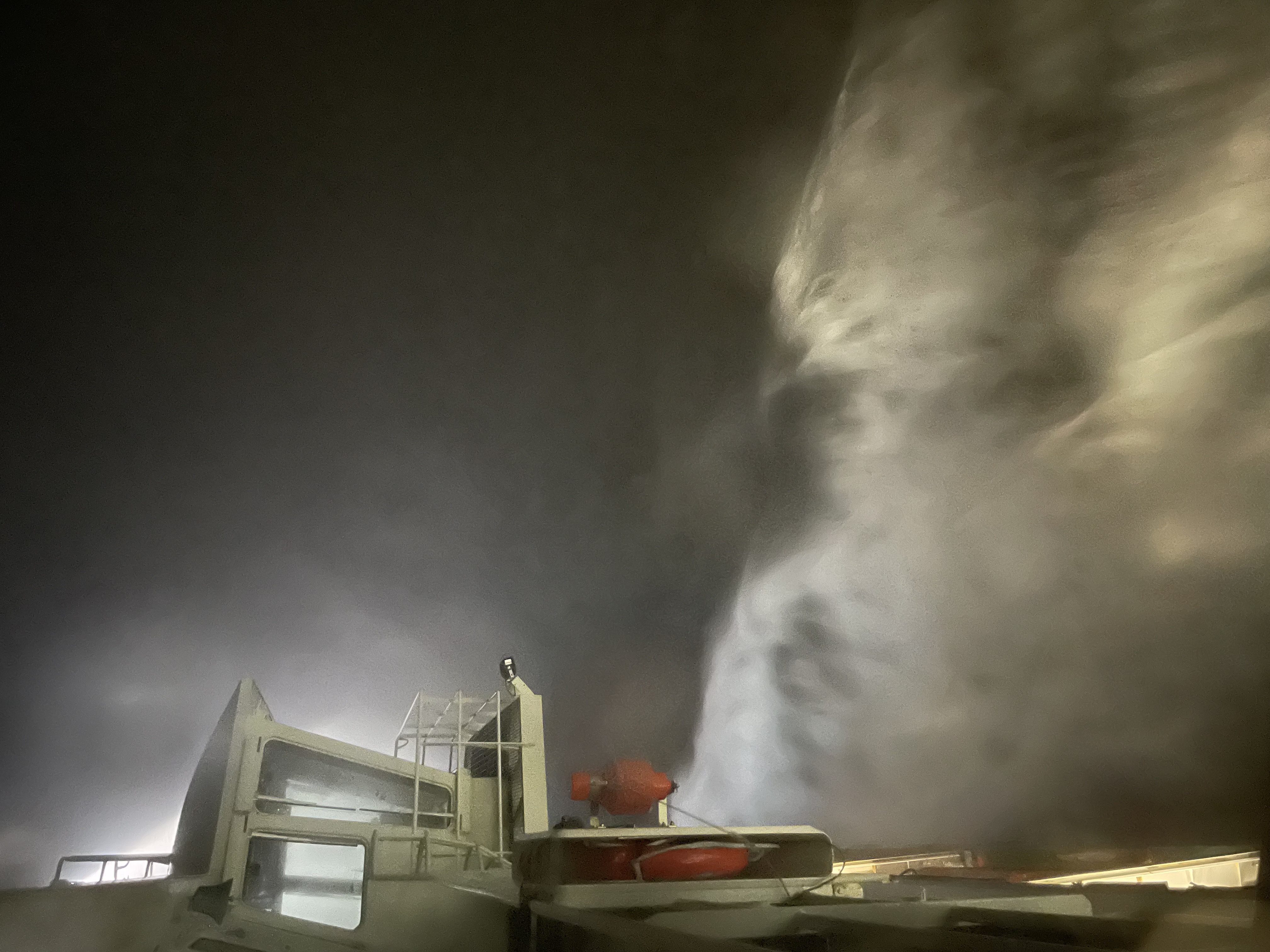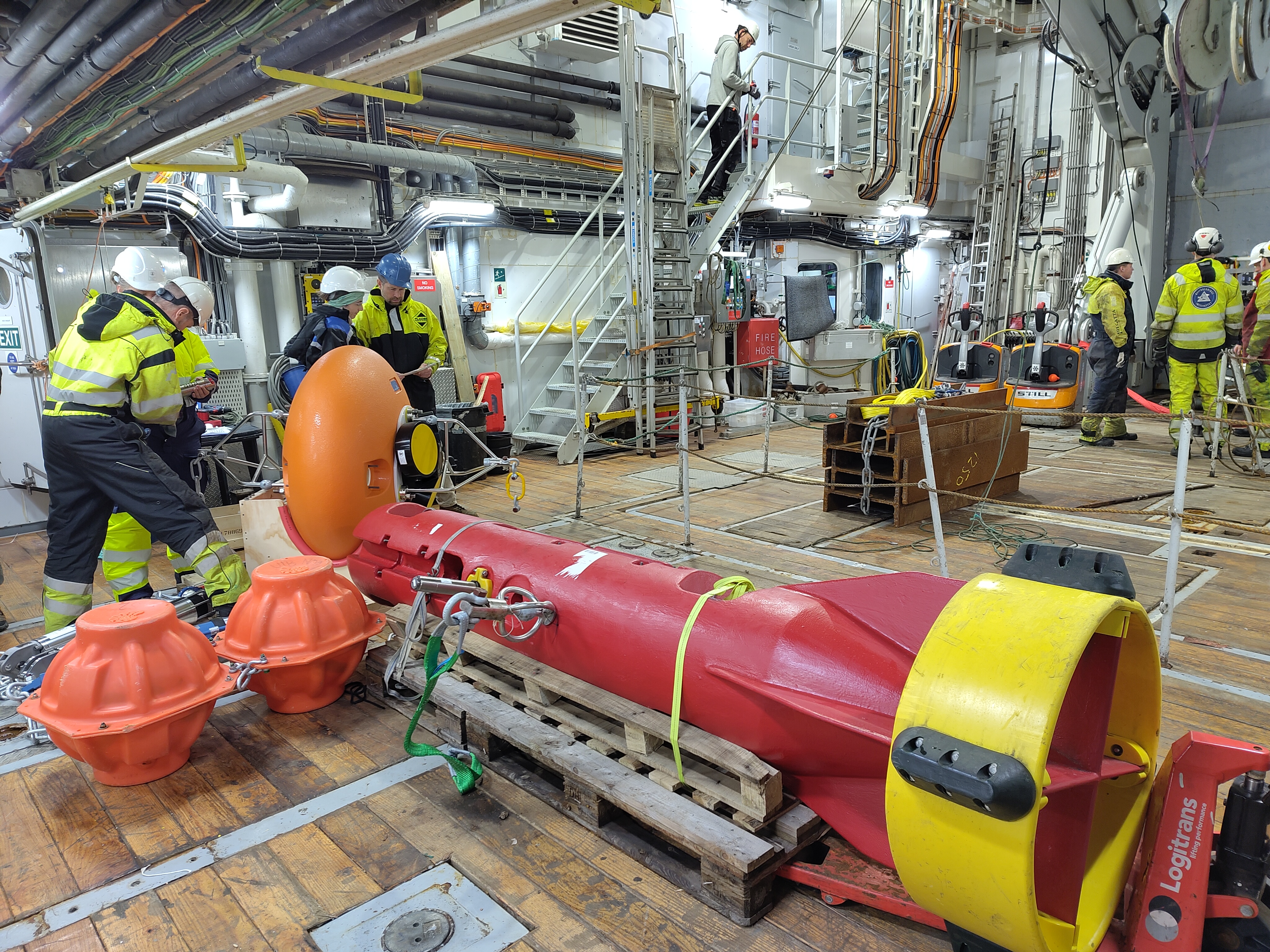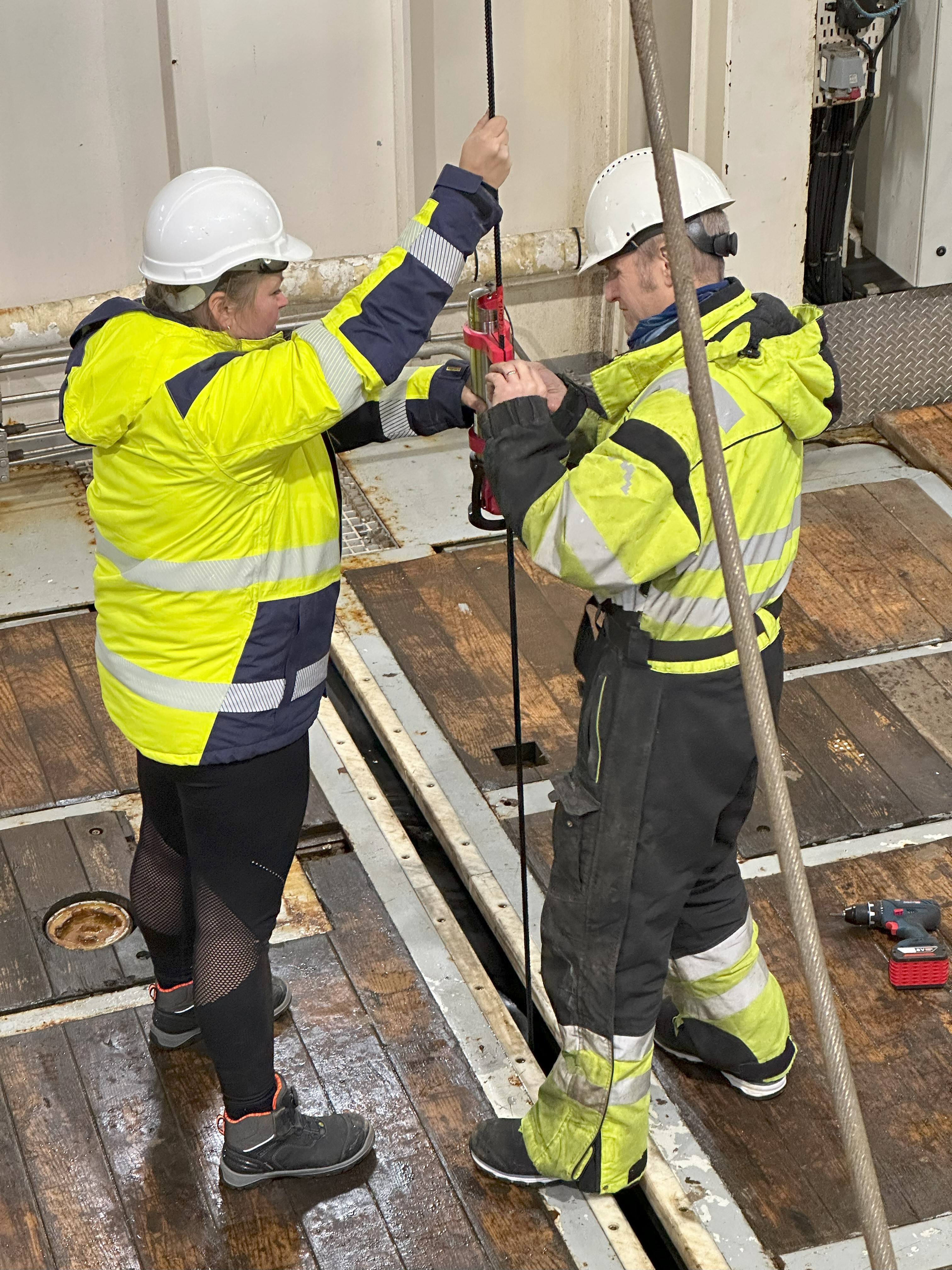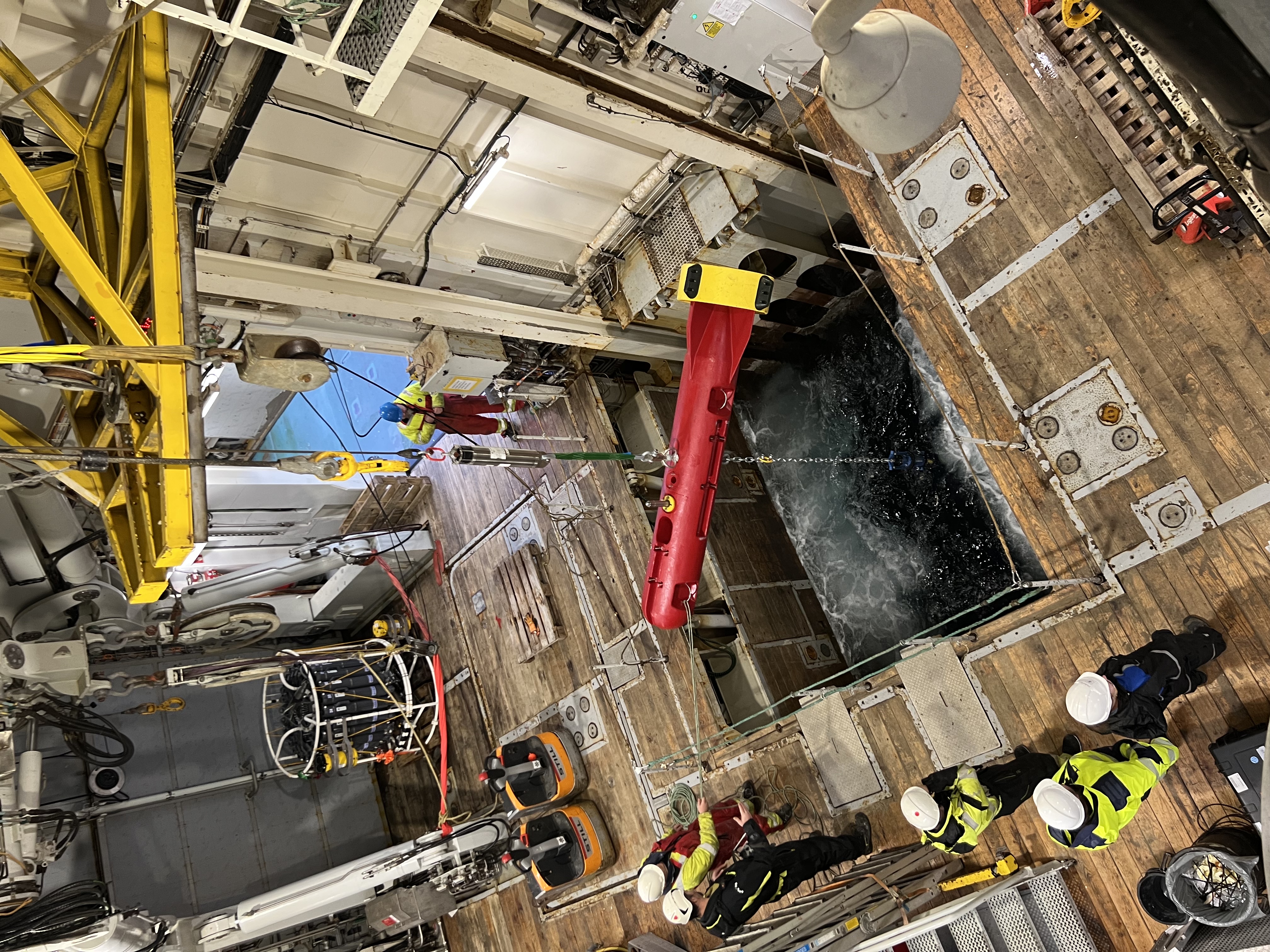Written by: author Dallas Murphy

It blew 60 knots last night, 18 October, with higher gusts here at 71°N; after all, it’s autumn in the Greenland-Iceland Seas. But you’d never know it unless you went up to the bridge and looked at the numbers or observed the sea state. Kronprins Haakon remained unflustered by a mere 60 knots, and all was well. However, all is not well in the Nordic Seas, nor any other for that matter. We’ve seen the headlines—about CO2 uptake at capacity, habitat destruction, sea ice loss, and perhaps most important climatically, about the looming threat to the integrity of the Atlantic Meridional Overturning Circulation. It’s slowing by a you-name-it percentage; no, it’s shutting down, tipping points imminent, climate disaster in the offing. Sure, some are just clickbait, but in this warming world change of some sort is certain.
For instance, what will happen when the sea ice melts? Will that retard dense-water formation essential to AMOC health? Not necessarily. The tropical-origin Atlantic Water that delivers anomalous warmth to the Norwegian coast relinquishes its heat to the atmosphere as it flows northward around the Nordic Seas and Arctic Ocean. The southern return flow via the East Greenland Current has, until recently, proceeded beneath sea ice thus insulating the water from the cold air above. But in the warming climate, with decreased sea ice, more open water will be exposed to the cold air. Therefore, the total heat loss and attendant densification of Atlantic Water may be enhanced. This—less ice, more cooling—is somewhat counterintuitive, but may impart resilience to AMOC by sustaining the supply of dense water to its lower limb, if the hypothesis holds. Thus AMOC would continue to perform its generous service moderating our climate by balancing the hemispheric transport of hot and cold. That would be refreshing good news.
However, this cruise will not shed light on the hypothesis, nor will it return with much observational data; that will come from subsequent cruises. The ocean refuses to reveal its ways in Eureka moments. This cruise is dedicated to installing the instruments that will afford essential data about water-mass transformation in the East Greenland Current.
A First
Chief Scientist Kjetil Våge has planned to lay a string of five moorings picket-fence fashion athwart the East Greenland Current at 71°N to measure temperature, salinity, and velocity over two years. The brain trust decided to deploy their moorings through the “moon pool.” That’s never been done before on this ship. The moon pool is a square hole in the main hangar deck covered by stout double trap doors that open downward to expose a patch of East Greenland Current water.
The advantages are enormous: Moon-pool deployment affords dead-accurate placement. But most important: Our weather has been uniformly vile. Icy decks, steely wind, and violent motion would have rendered deployment over the stern or even, as per usual, from the starboard side impossible. But the moon pool is not only sheltered in the (relatively) warm main hangar, it’s situated near the ship’s center of mass where motion is minimal.
Heads together, Kjetil; Captain Johansen; Bosun Boska; Chief Mate Røttingen; Helge, our mooring master; technicians Ailin and Bjørn Erik; and the resident deck hands planned procedures and foresaw potential mishaps. That the anchor, 1250 kilos of iron I-beams, goes down first exerts significant strain on the spooled Kevlar rope, so the rope had to be initially spooled under tension to avoid overrides, and some intricate rigging was required to lead the rope from the spool on the aft deck to blocks over head in the hangar, thence down to the moon pool.
You could tell everyone involved, including avid grad students, some on their first cruise, were restrainedly excited by the novel challenge. And you had to admire their ingenuity and cool-headed professionalism as they rigged lifting mechanisms and laid out consecutively the components and instruments ready to go on the rope.
Though writers hate to admit it, some stories are better revealed by photos than by prose, but here’s a quick precis: The trap doors open, the anchor goes down, then the rope is stoppered off. The doors close, Helge and Ailin attach the acoustic release, the lowest mooring component. The doors open, and the assembly is lowered to the point where the next item—it could be a temperature logger, flotation balls to keep the rope straight, a current meter, or a CTD—is attached, then lowered, the doors close. That process is repeated step by step until all instruments are attached right up to the big top float. Then the entire assembly is released to the precise spot on the sea bed. After that: handshakes and proud congratulations all around.



Tonight, 20 October, the fifth mooring—and an opportunistic sixth!—will be deployed. There’s a rush to do both in a single night, because another 60-knot blow looms. But one notices that with each moon-pool deployment the process goes faster and more efficiently. This looks like the wave of the future, assuming your ship comes equipped with a moon pool.

